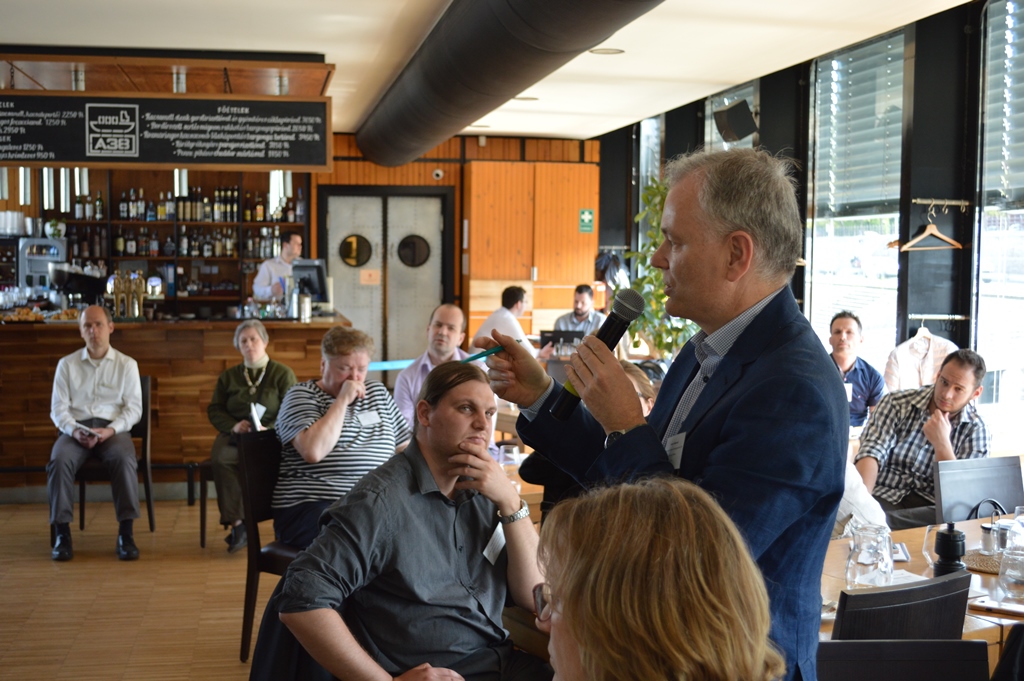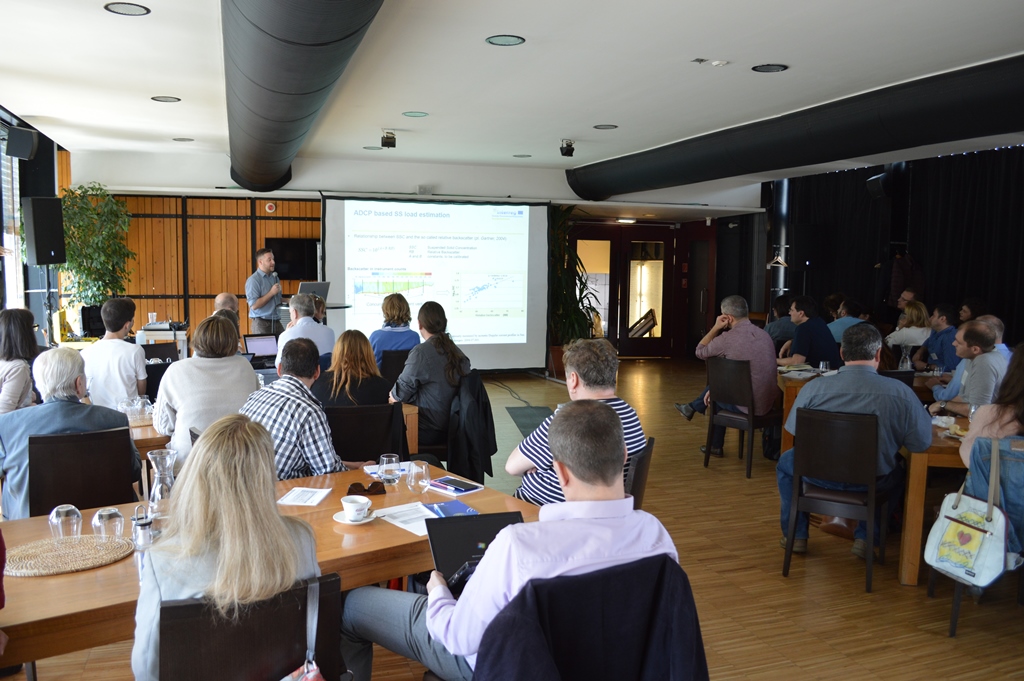DanubeSediment - Experts discuss good practice and recommendations for sediment monitoring
25-04-2018
On April 18th, 57 participants met in Budapest for a Sediment Monitoring Workshop, which was organized by the Budapest University of Technology and Economics (BME). Experts from throughout the river basin enjoyed the atmosphere of the event location ship A38, on the Danube River.
 In the morning, DanubeSediment partners presented new results in sediment monitoring. A focus was placed on data collection and the different sampling techniques used by the partner countries. With a focus on capacity building, good practices for sediment monitoring of both bedload and suspended sediment were presented.
In the morning, DanubeSediment partners presented new results in sediment monitoring. A focus was placed on data collection and the different sampling techniques used by the partner countries. With a focus on capacity building, good practices for sediment monitoring of both bedload and suspended sediment were presented.
Based on these project results, the participants discussed project recommendations for improving sediment monitoring. The main points in relation to sediment monitoring were:
- Several existing monitoring stations require improvements and the setup of additional, new monitoring stations is recommended.
- In order to reduce the differences in data collection methods of Danube countries and to ensure comparable sediment data, the sediment monitoring network should be harmonized and coordinated at a transboundary level.
- To monitor suspended sediment (i.e. fine sediment transported within the water column), the sediment monitoring network should include continuous turbidity measurements. To calibrate this data, complementary cross-sectional multipoint measurement campaigns are recommended.
- To monitor bedload sediment (i.e. gravel and sand moving along the river bed), it is strongly recommended to increase the number of monitoring stations, performing thorough, cross-sectional physical samplings.

More general recommendations were:
- Practitioners must become more aware of the importance of sediment monitoring. Sediment sampling must be undertaken in regular frequency by personnel that receives regular training.
- To ensure the long-term availability of historical and current sediment data, e.g. from the DanubeSediment project, a central database is needed. The data must be made available to all interested stakeholders.
- When it comes to planning river restoration measures, the responsible authorities need to consider sediment transport processes on local and regional scale more closely.
Further results and recommendations from the workshop will be made available shortly in a DanubeSediment project report as well as in a handbook on good practices of sediment monitoring.
You can download the presentations here:
- Presentations "Sediment Monitoring Workshop" Part 1
- Presentations "Sediment Monitoring Workshop" Part 2
You can find more pictures of the workshop in the gallery.
